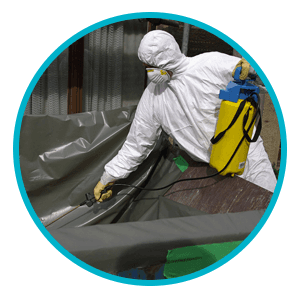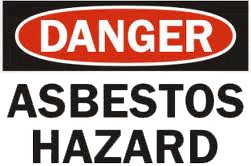
The word “Asbestos Removal Northampton ” refers to the techniques for removing, encapsulating, restoring, and regulating fiber release from asbestos-containing materials. Although asbestos is known for its toxicity and negative health effects, it is not a health hazard if the fibers are not displaced from the substance. However, if the fibers are released into the air, they can be inhaled or dispersed by air currents, creating a major health danger.
It was commonly employed in the building until the 1980s when it was outlawed. Even though asbestos was no longer used in construction in the 1990s, many buildings in Toronto and the GTA were constructed before the ban and hence likely contained asbestos-containing materials. Any damage to those materials can cause pollution by releasing asbestos microfibers into the air.

Asbestosis, lung cancer, and mesothelioma are just a few of the health problems caused by inhaling these microfibers. Another alarming aspect is that asbestos contamination is difficult to detect because asbestos has no distinct odour, and poisoning symptoms normally appear years, if not decades, after exposure. Asbestos removal is required in residential and commercial structures due to the dangers it poses to people’s health.
You should analyze the magnitude and nature of the job and your ability to execute it before removing any asbestos-related materials. When it comes to asbestos occupational health and safety professionals with documented occupational hygiene experience connected to asbestos and related handling are suggested to present asbestos-related materials. These individuals would include:
- Registered hygienists or technologists with special training and experience in asbestos management and disposal processes.
- Safety Professionals who have appropriate education degrees and expertise in asbestos control registered or certified.
- A licensed inspector.
- Contractors with asbestos abatement, management, and work procedures experience
Although homeowners are legally allowed to remove asbestos from their homes, it is not suggested unless they are professionals. During asbestos removal, packaging, shipping, and disposal, asbestos can offer a substantial health danger. Thus it’s critical to handle asbestos-related material safely.
It’s critical to remember the following list of things not to do if you have to handle or operate with asbestos:
- Keep asbestos-related materials away from garden areas where they could be broken or crushed.
- Do not walk on cement roofs manufactured from corrugated asbestos, as this material poses a substantial risk of falling through the roof.
The following is a list of asbestos removal procedures that are recommended:
- If you are unsure whether a substance includes traces of asbestos or similar materials, have it analyzed by a recognized laboratory.
- Work with asbestos in well-ventilated areas at all times.
- To reduce the release of fibers and dust, make sure the material is properly wetted down and remains wet during the job.
Asbestos can only be disposed of at landfills that have been approved by the government and are equipped to handle such trash. All asbestos-containing products must be double-bagged and sealed in asbestos disposal bags with correct warnings printed on them. The garbage should be transported in a covered and sealed automobile or vehicle to avoid releasing dangerous asbestos dust into the air. It’s typically better to leave it to the professionals.
